Best Practices Articles

Why You Need PRM for PartnerOps: The Indispensable Engine Beyond CRM
Business growth depends on reaching customers through multiple paths, and one of the most effective is the indirect sales channel. Instead of selling directly, companies partner with resellers, distributors, and system integrators who market their products or services. These partners do more than drive sales—they open new markets, act as brand ambassadors, and deliver added services.
Companies use PRM (Partner Relationship Management) systems to manage these critical relationships. PRM streamlines partner onboarding, communication, and performance, helping businesses turn partnerships into a competitive advantage.
However, a common question arises for businesses: Can their existing Customer Relationship Management (CRM) system, which they use for their direct sales, also handle all the complicated stuff that comes with managing partners? Or do they need a special system for this? Many people mistakenly believe a CRM can simply stretch to cover partner management. But the truth is, if a company wants to get the most out of its partners through Partner Operations (PartnerOps), it needs a dedicated Partner Relationship Management (PRM) system.
This guide explains why a CRM, while great for dealing directly with customers, does not cut it for a strong PartnerOps strategy. We will also see why a dedicated PRM is a key technology that helps a company's indirect sales grow predictable, scalable, and steady through its partners.
Understanding the Basics: CRM for Direct, PRM for Indirect
To understand why PRM (Partner Relationship Management) is so essential for PartnerOps, we first need to understand the different jobs that CRM and PRM do. They are different, but they work together.
Customer Relationship Management (CRM): The Heart of Direct Customer Engagement
At its core, CRM software helps a company manage and understand every interaction with its direct and potential customers. Its main goal is to improve the customer journey, from getting new leads and making sales to providing ongoing customer service and keeping customers loyal. CRM systems gather all customer information – like their background, past conversations, what they bought, any service issues, and how they interacted with the website – into one easy-to-see place.
- Main Focus: The end-customer.
- Key Goals: Make direct sales bigger, make customers happier, keep customers around longer, and increase the total value a customer brings to the company over time.
- Key Users: Internal sales teams, marketing teams, customer service people, and folks who handle sales and marketing operations.
- Main Jobs: Automating sales tasks (managing leads, opportunities, accounts, and contacts), automating direct marketing (campaigns, breaking customers into groups, email marketing), and customer service and support (handling cases, providing helpful information).
- Analogy: Imagine a CRM as the central control room for a direct sales and customer service team. It gives them all the information they need to manage customer relationships effectively, from the very first time they connect to their long-term loyalty.
CRM is the crucial foundation of a well-run Revenue Operations (RevOps) strategy, which aims to bring together and improve all the functions that directly generate income.
Partner Relationship Management (PRM): The Engine of Indirect Channel Growth
PRM software specifically manages, empowers, and improves the relationships between a company (the vendor) and its indirect channel partners. A PRM system understands that partners are unique businesses with their ways of operating, sales processes, and support needs – they are different from regular customers. Its main goal is to maximize these partner businesses' performance, productivity, and loyalty.
- Primary Focus: The channel partner (the go-between).
- Key Goals: Increase sales revenue through partners, make partners more engaged, help partners become more productive, make channel operations smoother, and get the best return on investment from the channel.
- Key Users: Internal channel managers, channel marketing teams, partner operations specialists, and, very importantly, external channel partners.
- Core Functions: Finding new partners, bringing partners on board, providing a partner portal, registering deals, sending out leads, automating marketing through partners (TCMA), helping partners sell, training and certifying partners (LMS), managing incentives and marketing funds, analyzing partner performance, and communicating with partners.
- Analogy: Think of PRM as the special command center for a partner ecosystem. It gives partners the tools, information, and support they need to sell your products to their customers effectively.
PRM is the dedicated technology that forms the foundation for running a strong Partner Operations (PartnerOps) framework, which focuses entirely on improving the indirect path to revenue.
The "Why Not CRM for PartnerOps?" Problem: Showing the Big Gaps
The common misunderstanding happens because CRM and PRM manage "relationships" and involve sales data. However, squeezing partner management into a CRM is like hammering nails with a screwdriver. You might get some work done, but it will be inefficient, not very good, and ultimately damage both the tool and the job.
Here is why CRM simply fails to support a complete PartnerOps strategy:
No Partner-Focused External View
- CRM's Problem: CRM designers tailor the look and feel for internal employees. Giving outside partners direct access to your CRM is a security nightmare, too complicated, and shows internal data that partners do not need to see. Even if a CRM has a "partner community" part, it often lacks deep features specific to channels.
- PRM's Solution: A PRM's core is a special, secure, branded Partner Portal. This portal is the essential self-service center for partners, giving them personalized dashboards, helpful content, automated tools, and clear insights into their actions. The developer built it to meet their needs, not your internal sales team's needs.
Not Enough Partner Lifecycle Management & Onboarding
- CRM's Problem: CRM developers do not build it to manage the unique journey of a channel partner. It lacks automated ways for partners to submit applications, strict qualification processes, electronic signatures for partner agreements, or structured ways to bring new partners on board. Trying to do this in CRM requires massive, expensive custom changes and a lot of manual checking.
- PRM's Solution: PRM offers strong, automated Partner Recruitment and Onboarding features. It makes the entire process smoother, from initial interest to full readiness. This includes custom application forms, automated rules for qualifying partners, contract management with e-signatures, and guided onboarding steps, significantly speeding up the time it takes for new partners to make their first sale.
Limited Sales Help Specific to Channels
- CRM's Problem: A CRM usually stores general sales materials for direct use. It does not have ways for partners to customize or put their brand on materials easily or to run their marketing campaigns using the vendor's content. It does not provide partners with sales guides designed for indirect selling.
- PRM's Solution: PRM provides a sophisticated Partner Sales Enablement suite. This includes a central library of content with strict control over versions, advanced tools for automated co-branding, and customizable sales guides specifically designed for channel partners. It ensures partners have immediate access to the exact, approved, and relevant materials to close deals.
Inadequate Deal Registration & Solving Conflicts
- CRM's Problem: CRM's lead and opportunity management tools are best for direct sales pipelines. They usually lack the special rules and workflows needed for channel-specific deal registration, checking for conflicts across many partners, automatically sending leads to the best-fit partner, or giving credit to multiple partners in complicated deals. This leads to disputes among partners, distrust, and missed opportunities.
- PRM's Solution: PRM is built explicitly for Deal Registration and Lead Management for the channel. It offers easy-to-use forms for partners to submit leads, automated conflict checks, smart rules for routing based on location, product, or partner expertise, and clear steps for approving deals. It provides transparency into the deal status for partners and accurate credit for vendors, effectively preventing and resolving conflicts.
Missing Through-Channel Marketing Automation (TCMA)
- CRM's Problem: CRM often connects with Marketing Automation Platforms (MAPs) for direct-to-customer campaigns. It does not allow vendors to empower partners to run their marketing campaigns using vendor-approved content. This makes channel marketing a huge manual task.
- PRM's Solution: PRM includes integrated Through-Channel Marketing Automation (TCMA). This allows vendors to create "campaigns-in-a-box" with ready-made email templates, social media posts, and landing pages that partners can easily customize, brand with their logo, and send out to their local markets. It also typically includes strong MDF (Market Development Funds) Management, automating the entire process from requesting funds to proving their effectiveness and tracking the return on investment.
No Dedicated Partner Training (LMS)
- CRM's Problem: A CRM is a sales and customer management tool, not a learning management system (LMS). It lacks the features to deliver structured training courses, track progress toward certification, manage learning paths, or offer tests specifically for partners.
- PRM's Solution: PRM often includes a fully integrated LMS module for partners. Vendors can provide complete training programs, product certifications, sales methods, and ongoing education. It tracks partner progress completion rates and provides valuable data on how ready and knowledgeable partners are.
Complicated Incentive & Funds Management
- CRM's Problem: CRM's built-in compensation tools are usually for internal sales commissions, not the complex, multi-level, and often backward-looking calculations needed for partner commissions, rebates, or using MDF. Managing these complex structures manually in a CRM leads to errors, delays, and unhappy partners.
- PRM's Solution: PRM offers flexible and strong Incentive & Funds Management modules. Vendors specifically build these tools to handle complex commission structures, tiered rebates, SPIFFs (sales performance incentive funds), and MDF allocation and tracking. They provide clear dashboards for partners to see what they have earned, automate payments, and ensure accuracy, building trust and encouraging desired behaviors.
Limited Partner Performance Visibility & Analytics
- CRM's Problem: While a CRM tracks direct sales pipelines and customer interactions, it lacks detailed insight into individual partner performance numbers unique to the channel. For example, it does not show how many partners use enablement tools, how many have completed training, the ROI from MDF use, or partner-specific lead conversion rates.
- PRM's Solution: PRM provides Dedicated Partner Performance Analytics & Reporting. It offers customizable dashboards that track key channel performance indicators. It allows channel managers to identify top-performing partners, find improvement areas, and make data-driven decisions for optimizing the partner program.
Security & Access Control Challenges for Outside Users
- CRM's Problem: Giving outside partners direct access to a CRM raises significant security and data privacy concerns. Customizing CRM permissions for external users is complex and expensive, often worsening the internal user experience.
- PRM's Solution: Developers design PRM to provide secure, role-based access for outside users. Its partner portal design naturally offers precise control over what information each partner sees and what actions they can take, ensuring data security and compliance while providing a smooth user experience.
Scalability for Partner Ecosystems
- CRM's Problem: Trying to manage hundreds or thousands of partners as individual "accounts" within a CRM quickly becomes clumsy, affecting performance and usability. CRM is best for managing millions of customers, not the unique operational needs of an extensive, complex network of partners.
- PRM's Solution: Developers build PRM to deliver enterprise-level scalability for channel ecosystems. It can efficiently manage thousands of partners, their interactions, and transactions without slowing down, ensuring your technology grows with your channel goals.
These critical gaps show that while a CRM is an invaluable tool for your direct business, it is simply not equipped to be the operational backbone for PartnerOps.
The "Why You Need PRM for PartnerOps" Idea: Powering the Indirect Engine
A dedicated Partner Relationship Management (PRM) solution is a wise investment that transforms your channel from a managed network into a proactively optimized, high-performing revenue engine. It is the essential tool for effectively carrying out a disciplined PartnerOps strategy:
- Complete Partner Lifecycle Automation: When a potential partner shows interest in their ongoing sales, marketing, and support activities, PRM automates and streamlines every step of the partner journey. This reduces administrative work, speeds up how quickly partners become productive and ensures a consistent, efficient experience on a large scale.
- Unmatched Partner Experience & Engagement: By providing a personalized, easy-to-use, and self-service partner portal, PRM makes it incredibly simple and enjoyable for partners to interact with your brand. This leads to higher engagement, greater loyalty, and a stronger sense of partnership, making your company a preferred vendor.
- Dedicated Enablement for Channel Success: PRM empowers partners with the tools, knowledge, and resources needed to sell and market your products effectively. From marketing materials, they can co-brand and use automated campaign templates to comprehensive training and certification programs. PRM ensures partners are always ready to sell and aligned with your brand.
- Transparent Deal & Incentive Management: The specialized deal registration, lead management, and incentive engines within a PRM ensure fair credit, prevent conflicts among partners, and automate complex compensation calculations. This transparency builds trust with partners, motivates performance, and significantly reduces disagreements.
- Deep Channel Analytics for Data-Driven PartnerOps: PRM provides unmatched visibility into partner performance, program effectiveness, and the return on investment from the channel. This detailed data allows channel leaders to identify trends, optimize how they use resources, pinpoint areas for improvement, and make strategic decisions that directly drive indirect revenue growth.
- Scalability & Security for Enterprise Ecosystems: Designed from the ground up for large, complex networks, PRM can efficiently manage thousands of partners and millions of transactions. Its enterprise-grade security features protect sensitive partner and customer data, meeting strict compliance requirements.
PRM does not just "manage" partners; it empowers them, makes their operations smoother, and provides the strategic insights necessary to improve your indirect revenue streams continuously. This is the core purpose of PartnerOps.
The Indispensable Teamwork: How PRM (for PartnerOps) Works with CRM (for RevOps)
The most successful organizations understand that the future of revenue operations does not involve choosing between CRM and PRM but rather their seamless, strategic integration. CRM is the command center for your direct customer relationships and the backbone of your RevOps strategy. PRM is the dedicated engine for your partner ecosystem and the technological core of your PartnerOps strategy. When integrated, they create a unified, holistic revenue operations system.
PRM Fuels CRM with Channel-Sourced Data:
- Leads partners automatically generate and register within the PRM into the CRM, making the direct sales pipeline richer.
- Deals partners close and win in the PRM flow into the CRM's opportunity management, providing a complete view of all revenue, no matter where it came from.
- Partner activities and insights gathered in the PRM can add valuable context to customer records in the CRM, painting a fuller picture of the customer journey.
CRM Enriches PRM with Customer Context:
- Relevant customer accounts and contact information from the CRM can sync to the PRM, giving partners the necessary context for their sales and service efforts.
- Direct sales activities related to specific customers in CRM can be visible to relevant partners in PRM, encouraging co-selling and collaboration without conflict.
Unified Reporting and Analytics:
- By combining data from both PRM and CRM, organizations can generate comprehensive reports that provide a single, complete view of total revenue, accurately giving credit across both direct and indirect channels. This allows for truly data-driven decisions for overall business strategy.
Harmonized Customer Journey:
- Regardless of whether a customer engages directly with your sales team (managed by CRM) or through a partner (managed by PRM), the integrated systems ensure a consistent, seamless experience. This allows for unified customer support, marketing messages, and overall lifecycle management.
This powerful interaction ensures that your direct and indirect revenue engines operate efficiently side-by-side and intelligently feed into and improve each other, creating a predictable, scalable, and fully transparent revenue pipeline.
ZINFI's PartnerOps Framework in Action with a Dedicated PRM
ZINFI's PartnerOps Framework provides the strategic plan for complete channel management. A dedicated Partner Relationship Management (PRM) solution is the essential technological foundation that enables companies to execute each part of this framework on a large scale and with unmatched sophistication, something a CRM simply cannot achieve:
- Strategize: The PRM provides deep data analytics on partner performance, how much market partners are reaching, and how effective programs are, directly informing and refining channel strategies for targeted growth.
- Recruit: A dedicated PRM streamlines the entire partner recruitment process, automating applications, qualifications, and initial communications, allowing for rapid and efficient expansion of the partner network globally.
- Onboard: The PRM's integrated LMS and automated workflows ensure new partners quickly and consistently gain product knowledge, sales methodologies, and compliance training, significantly speeding up their time to productivity.
- Enable: The PRM serves as the central content hub, giving partners immediate access to dynamic, co-brandable marketing assets, sales playbooks, and training materials, all customized to their needs and always up-to-date.
- Co-Market: Using the PRM's TCMA capabilities, vendors empower partners to execute localized, brand-compliant marketing campaigns. The PRM automates campaign deployment, manages MDF, and tracks performance, making large-scale channel marketing truly effective.
- Co-Sell: The PRM's strong deal registration and lead management functionalities prevent conflict, automatically distribute leads to the best-fit partner, and provide real-time visibility into the channel pipeline, ensuring seamless collaboration between partners and internal teams.
- Incentivize: The PRM automates complex incentive structures (commissions, rebates, SPIFFs, MDF), ensuring transparent calculations and timely payouts across diverse geographies and partner types, directly motivating performance and building partner trust.
- Accelerate: Through its robust, detailed analytics and reporting tools, the PRM provides comprehensive insights into channel performance. This data enables channel leadership to continuously optimize programs, identify growth opportunities, and rapidly accelerate indirect revenue streams.
In these critical areas, a dedicated PRM solution offers the specialized functionality, automation, and partner-focused design that CRM lacks, making it the indispensable technology for executing a high-performing PartnerOps strategy.
Conclusion
In today's complex world of making money, understanding the distinct roles of CRM and PRM is extremely important. While Customer Relationship Management (CRM) software is essential for building strong direct customer relationships and often forms the foundation of a robust Revenue Operations (RevOps) strategy, it cannot handle the unique complexities of an indirect partner ecosystem.
A dedicated Partner Relationship Management (PRM) solution is not just an optional extra for any organization serious about achieving scalable, predictable growth through its partner network. It is the essential technological engine for a successful Partner Operations (PartnerOps) framework. Trying to force specialized partner management processes into a CRM inevitably leads to inefficient operations, scattered data, unengaged partners, and missed revenue opportunities.
The real power lies in the brilliant teamwork between these two distinct platforms. You unlock a unified revenue engine by integrating a specialized PRM (for PartnerOps) with your existing CRM (for RevOps). This powerful combination ensures smooth data flow, complete visibility into your sales pipeline, accurate credit for revenue across all channels, and a consistent experience for your customers and partners. In essence, while CRM manages the customer, PRM manages the channel partner, and together, they orchestrate a comprehensive strategy for total business growth.
Best Practices Guidebook
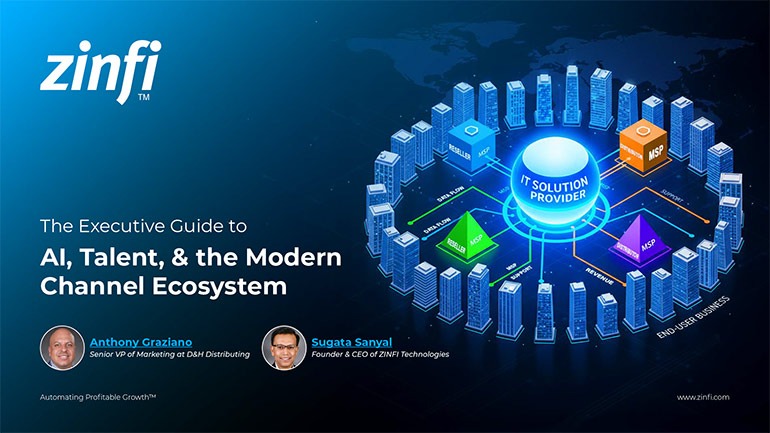 Modernizing Channel Marketing: AI and Ecosystem Enablement Best Practices
Modernizing Channel Marketing: AI and Ecosystem Enablement Best PracticesDownload for FREE
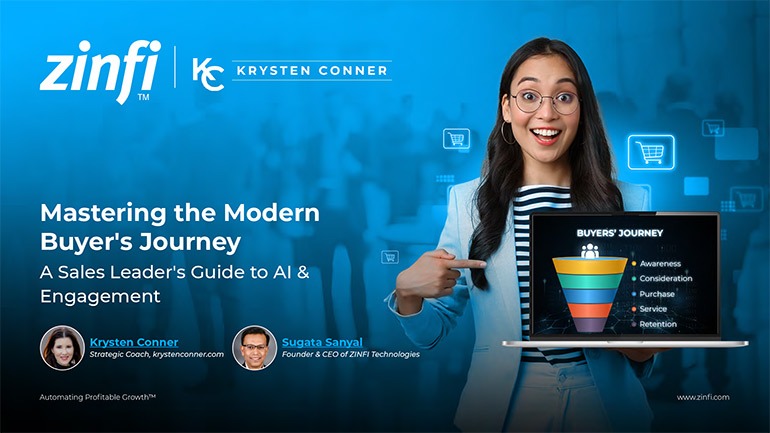 The Channel’s Shift to Partner-Led With AI Best Practices
The Channel’s Shift to Partner-Led With AI Best PracticesDownload for FREE
 Hyperscalers, ISVs, and AI: Shaping the Future of B2B Software Distribution
Hyperscalers, ISVs, and AI: Shaping the Future of B2B Software DistributionDownload for FREE
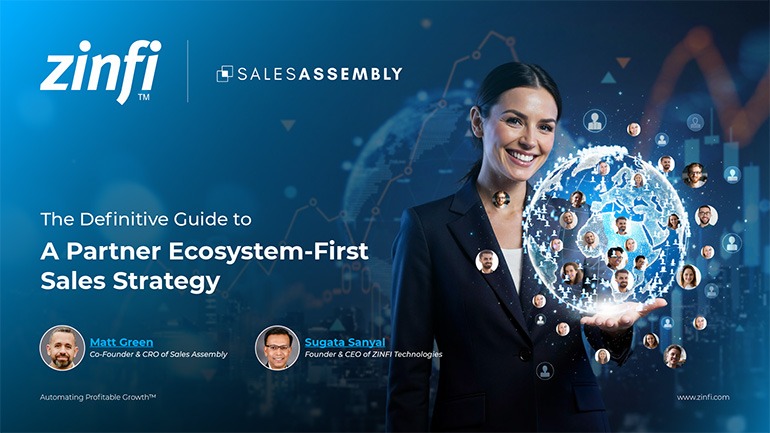 Definitive Guide to a Partner Ecosystem-First Sales Strategy
Definitive Guide to a Partner Ecosystem-First Sales StrategyDownload for FREE
 The Partner-Led Digital and AI Transformation Best Practices
The Partner-Led Digital and AI Transformation Best PracticesDownload for FREE
 Startup Talent Recruitment: Hiring Missionaries, Not Mercenaries
Startup Talent Recruitment: Hiring Missionaries, Not MercenariesDownload for FREE
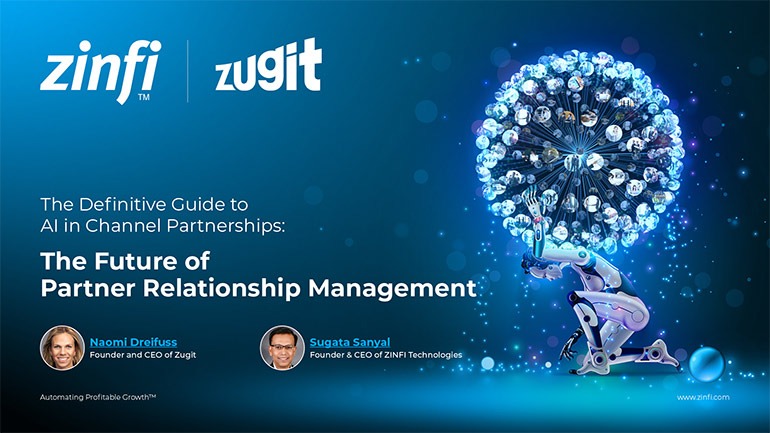 The Future of Partner Relationship Management with AI in Partnerships
The Future of Partner Relationship Management with AI in PartnershipsDownload for FREE
 Cybersecurity for the 99%: Strategies from the Frontline
Cybersecurity for the 99%: Strategies from the FrontlineDownload for FREE
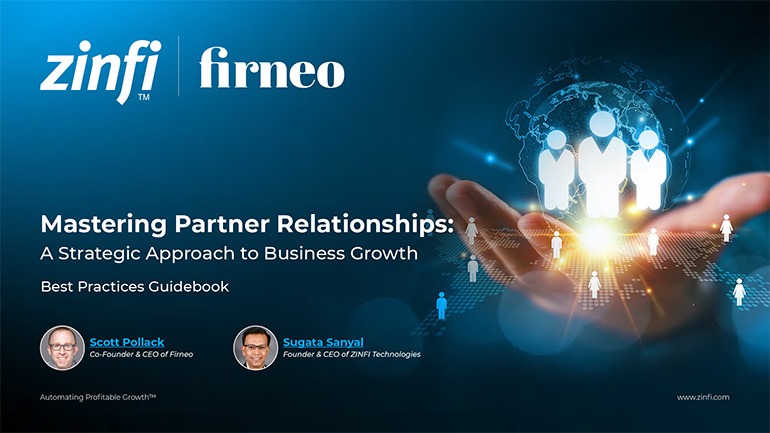 Mastering Partner Relationships: A Strategic Approach to Business Growth
Mastering Partner Relationships: A Strategic Approach to Business GrowthDownload for FREE
 Mastering Partner Relationship Management: Keys to SaaS Channel Success
Mastering Partner Relationship Management: Keys to SaaS Channel SuccessDownload for FREE
 Navigating the AI Revolution: Guide for Partners in the Microsoft Ecosystem
Navigating the AI Revolution: Guide for Partners in the Microsoft EcosystemDownload for FREE
 Mastering the Modern Buyers Journey: Sales Leader’s Guide to AI & Engagement
Mastering the Modern Buyers Journey: Sales Leader’s Guide to AI & EngagementDownload for FREE










